India is a hub for festivals. In India there are more than 10 major festivals, namely Holi, Gudipadva, Ganesh Chaturthi, Diwali and many more. Apart from major festivals there are many more festivals which varies from states to states. Indians are more passionate when we speak of festivals and one of this festival is “ Navratri ”.
Navratri, of all festivals prevalent in India, is most popular and widely celebrated across the country. The word “Navratri” has been derived from two Sanskrit words “nav” meaning nine and “ratri” meaning night. Navratri or nine-nights comes from the western state of Gujarat when the entire Hindu community, especially the Gujarati’s recall their traditions, cultural beliefs and rituals and throw open into a ten-day period of fun, fiesta and celebrations through religious activities and elegant folk dances.
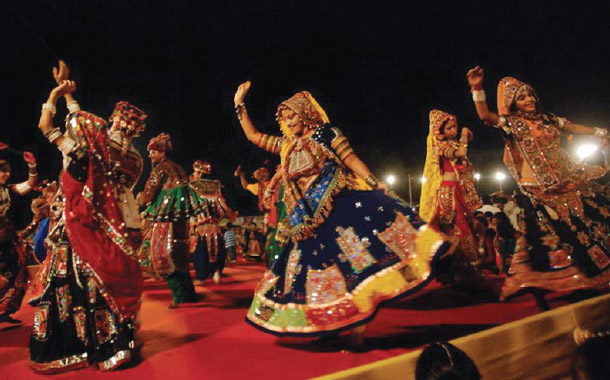
Navratri – Longest Dancing Festival
Longest Dance Festival – AN Ultimate Experience for TRAVELERS.
For all the travelers Navratri is the best festival to experience the culture & tradition of Gujarat. During this nine days travelers should travel to place like Surat, Ahmedabad, Rajkot, Vadodara, Gandhinagar & other small villages nearby to witness vibrancy of this festival.
Navratri in Mumbai is also celebrated on a large scale. The excitement and the enthusiasm is same as you find it in Gujarat. In Mumbai lots of upcoming Bollywood singers and celebrity grace the occasion with their presence and popular Bollywood songs. Place in Mumbai like Borivali, Malad and Ghatkopar are know for hosting Navratri in a very conventional way.
For all the festive traveler who enjoy traveling during the festival, Navratri is one of the awesome festival to experience.
Navratri of Gujarat – Dancing with grace.
Navratri calls for popular regional folk dances. The evenings of the nine-day fiesta are marked by graceful, energetic and vigorous folk dances. Besides Dandiya, the venue gets lively with graceful dances like Titoda, Sanedo, Hudo and Tali-raas.
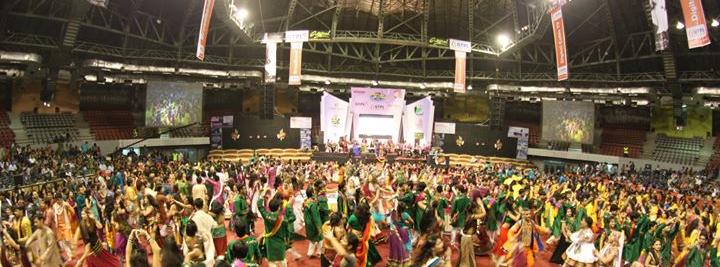
Navratri – Dance with grace.
Hudo is a form of folk dance which comes from the Panchal district of Gujarat where it was popular amongst the shepherd community. The idea of hudo is based on sheep fights and the form of dance represents movements of two sheep ramming their heads. While performing, dancers clap their hands with force and in a rhythmic way.
Sanedo is another typical traditional Navratri folk dance which contains couplets of four lines. Sanedos can be anything based on youth, romance or satire. It is a multi-theme recital which originated from the Patan district of Gujarat. There are different kinds of sanedo which are performed in various occasions. There are separate sanedo for marriage, religious activities, parties and other ceremonies. The music played during a sanedo performance comes from an instrument called daklu. It is similar in shape to a drum, however, is larger. There are professional Sanedo groups who perform all over the world.
Titoda is mainly performed by women who wish to impress the Gods and Goddesses so that they become an eligible mother that is they give birth to a healthy child. Titoda is based on a religious belief which says that if Gods and Goddesses are satisfied by the performers, they are granted their wish of having a child. Titoda is a form of a Garba dance in which women form a circle and move around to the tunes of Titoda music. Each woman in the circle performs the same step and has excellent coordination, while dancing. Various Gujarati steps are featured in Titoda dance.
Taali or Taali-Raas, as they call it, is based on themes of Gods and Goddesses. Through a Taali-Raas, performers tell a mythological story in a dramatic way. They pick up short stories from epics and present the scenes through acting, dancing and singing. The performers are dressed in their respective characters and they interact with audience, when in action. Most of Taali-Raas performances are based on love, romance and battles. They take audience back to the era when Goddesses were on the planet. Through Taali-Raas, one can know about Indian mythologies and epics which further impacts on the present culture and tradition.
Significance of 9 days of Navratri
Each of the nine days of Navratri has unique significance, with distinct colors, religious beliefs and practices. During these nine days ten forms of Goddess Durga are worshiped.
First Day of Navratri: On the first day, the first form of Durga, Shailputri, is worshiped. Considered as the daughter of the Himalayas, Durga is a form of power (Shakti) and companion of Lord Shiva. This day is associated with red color.
Second Day of Navratri: The second form of Durga, Brahmacharini is worshiped on this day. The word “Brahmacharini” has been derived from “Brahma” meaning penance. On the same day, the Goddess is also worshiped as Parvati or Uma, a form on Mata Shakti. People related Royal Blue on this auspicious day.
Third Day of Navratri: Goddess Durga is worshiped as Chandraghanta, a symbolic representation of beauty and courage. Yellow is the color of this day.
Fourth Day of Navratri: Green rules the day as Durga is worshiped in the form of Kushmanda, who is believed to have created the entire Universe, that too by her laugh.
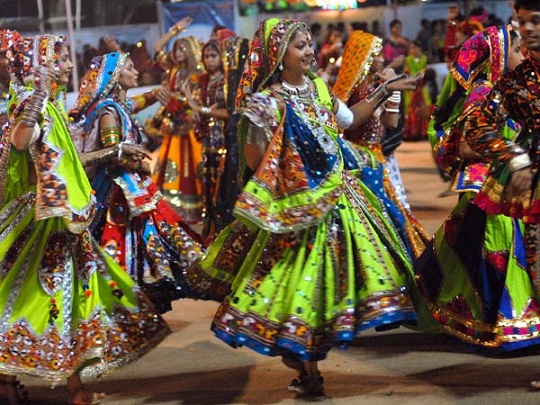
Navratri – Colorful display of passion
Fifth Day of Navratri: People offer their prayer to the divine Goddess, in the form of Skand Mata. It is believed that on this day, she represents the mother of Skanda, the chief warrior in the army of Gods. Gray is the color of this day.
Sixth Day of Navratri: Durga takes the form of Katyayani, having three eyes and four hands and is seated on a vehicle. People think about orange on this special day.
Seventh Day of Navratri: With a motive to make the devotees fearless, the Goddess takes the form of Kalratri, symbolizing a black and dark night. In contrast to the day’s belief, white is rejoiced all around.
Eight Day of Navratri: On the second-last day, it is Maha Guari. Durga is considered to be extraordinarily beautiful, as white as snow and well decked with ornaments. She is a sign peace, calmness and wisdom. Pink magnificently correlates to this day.
Ninth Day of Navratri: The final day is worshiped in the form of Siddhidatri, a belief that she consists of all eight siddhis. Residing on a lotus, the Yogis, Rishi-Munis, Siddhas and Sadhakas worship the eternal power and the color of sky blue matches with the mood of people.
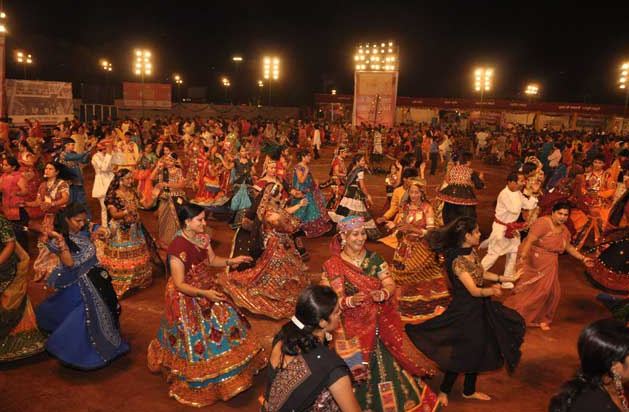
Navratri – Perfect display of Indian culture & tradition.
Traditional Navratri Outfits
Navratri welcomes a spirit of togetherness, with its varied colors and bright ambiance. To match this spirit, both men and women embrace their traditional dresses. Women prefer the age-old Chaniya Choli, Bandhani, multi colored Ghagras, Lehenga, Lancha and sarees with all different type of ornaments. Men dress in traditional Kafni pyjamas & kediyu which have excellent mirror work or casual kurtas & pyjamas. This graces the festival and enhances the true essence of Navratri.
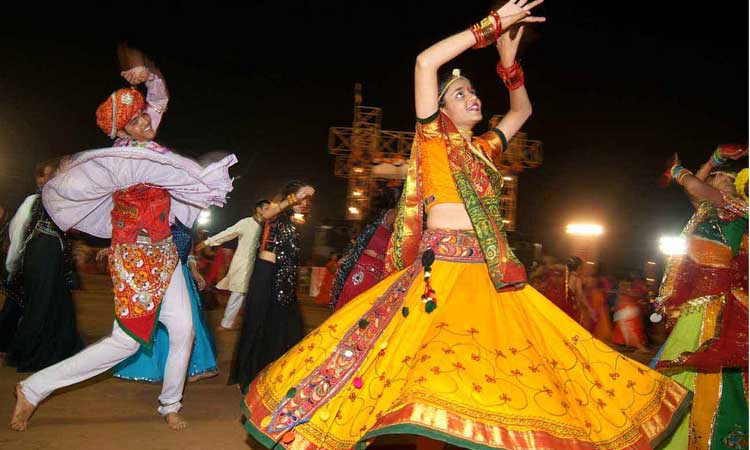
Navratri – The modern era costume
Navratri is also known as the festival of nine nights. During this time of the year, the state of Gujarat becomes more vibrant and dances enthusiastically to the tune of regional folk songs and music and also imbibes into memorable revelries and gala events. The best cities to experience this awesome festival are Surat, Ahmadabad, Rajkot and Vadodara.

Amazing blog full of useful information!
Very well portrayed!